From the January 2023 issue of Apollo. Preview and subscribe here.
Six 17th-century tapestries depicting the story of the Roman consul Publius Decius Mus hang in Kilkenny Castle. The works were brought to Ireland by the Duke of Ormond who was, as Mary Heffernan of the Office of Public Works, puts it, ‘definitely a major patron of art’. He was responsible for the building of the Royal Hospital in Kilmainham, the layout of swathes of Phoenix Park in Dublin and the assembly of a huge art collection for Kilkenny Castle. Despite his grand projects, the duke’s position in Irish society can be seen as ambiguous; Heffernan goes so far as to describe him as ‘basically an English person but his roots are here in Ireland’. Given that he served as Lord Lieutenant of Ireland several times, both his political success and his equivocal status spring from his close friendship with Charles II, in whose shadow court he had been a key figure during Charles’s exile in France. Just as the duke might be thought of as English, so suspicions hovered around Charles for being too French – but such are the cross-currents of Restoration identity.
Ormond bought these tapestries while he was in Europe and, while the design is based upon the famous suite of paintings by Peter Paul Rubens, the designs were not commissioned by the duke, but by the Genoan merchant Franco Cattaneo. Rubens painted his series of works telling the story of Decius Mus between 1616 and 1618. The cycle was acquired by the Princely Collection of Liechtenstein in 1693 and occupies an important place in the development of Rubens’s work. It was the first time the artist produced a historical cycle – a form that would become important in Rubens’s oeuvre, culminating in the series of 24 paintings chronicling the life of Marie de’ Medici that now hang in the Louvre – and one of the first times Rubens had incorporated classical figures within his paintings.
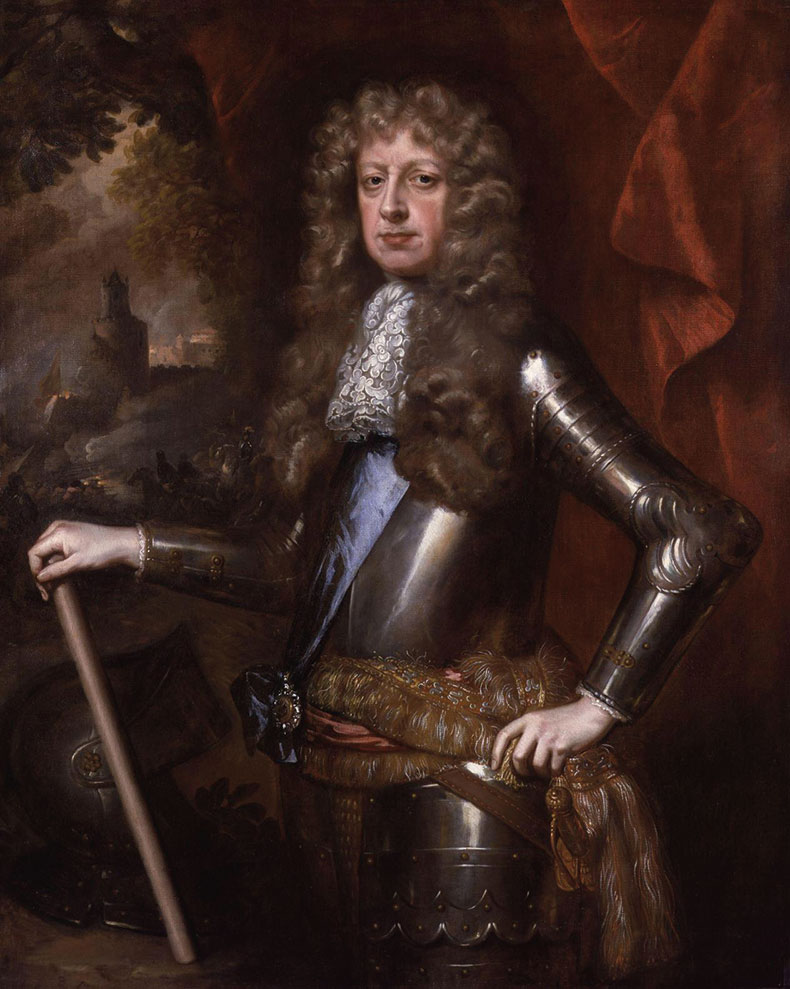
James Butler, 1st Duke of Ormond, (c. 1680–85), Willem Wissing. National Portrait Gallery, London. Photo: Gibson Green/Alamy Stock Photo
Livy recounts the tale of the consul Decius Mus in his History of Rome. During the time of the Second Latin War, when the Roman Republic was battling its neighbours in Latium, both Decius Mus and his co-consul, Titus Manlius Imperiosus Torquatus, dreamed that the army whose general died would be victorious, and that the general who dedicated himself to Mother Earth and the Manes (the ‘spirits of the dead’), would bring victory to his side. The consuls made a plan that whichever of them first faltered would make the pledge. As the left flank collapsed in battle, Decius Mus called the priest to advise him what to do. The priest performed the necessary prayers and rituals committing him to the Manes and Decius Mus attacked the enemy with such vigour that the Latins were too intimidated to join battle with him directly. Instead, they fired darts at him, which eventually proved fatal, but their fear of him meant that they gave his body a wide berth. This hollow in the Latin formation was the weakness that the Roman army was able to exploit. In his cycle of paintings, Rubens shows Decius Mus relating his dream to his officers; Decius Mus presenting the senators with plunder; the priest consecrating Decius Mus; the subsequent battle and the death of Decius Mus, and the funeral obsequies.
Even as Rubens was making his first foray into tapestry design in the early 17th century, there is no denying that Flemish tapestry weaving was entering into its twilight phase, ‘struggling with its own aesthetic principles and its social value’, as Jane Fenlon, Isabel Fernández López and Antonio Sama García put it in a paper about the conservation of the Kilkenny tapestries for the Institute of Conservation (ICON) in 2012. However, as pronounced displays of wealth with a pragmatic function as wall hangings, tapestries were still a prestige product and an artist as ambitious as Rubens was bound to emulate the example of artistic forbears, such as Leonardo and Raphael, in this field. At the time when Rubens was repeatedly visiting the city, in 1606 and 1607, Raphael’s Acts of Apostles (now in the Victoria and Albert Museum) hung in Genoa. Perhaps their presence spurred Rubens to try his hand at such work. His borrowings from Leonardo can be seen in the complex arrangement of men and horses in the tapestry depicting the battle and Decius Mus’s death. It is, perhaps, these influences that explain why Rubens chose to depict scenes that were on a scale far larger and more heroic than anything being made in Flanders – as these works were long believed to have been – at the time.
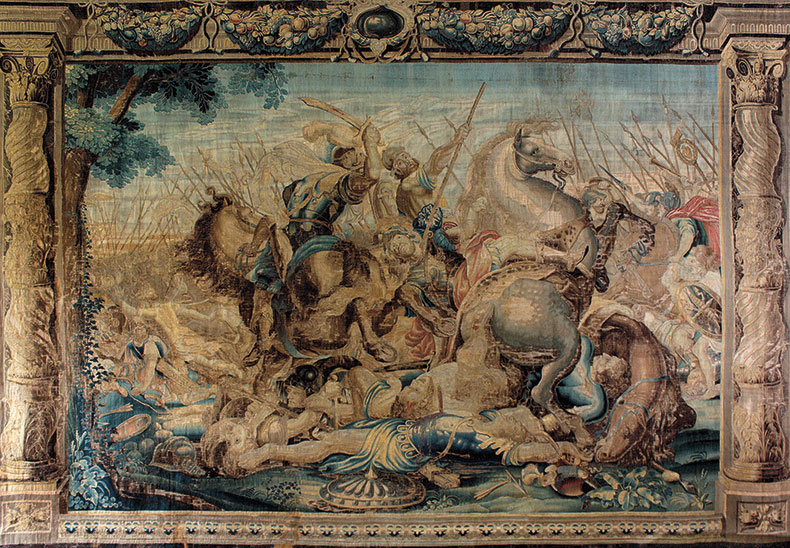
The Death of Decius Mus, from a suite of tapestries probably woven in the Netherlands to designs painted
by Rubens in 1616–18. Kilkenny Castle. Photo: Kilkenny Castle/Office of Public Works
As the ICON paper points out, ‘Rubens had personal connections with the tapestry weaving community. Hendrick Pypelinkx, his maternal grandfather, and his Uncle Dionysus were merchants specialising in the tapestry and textiles trade, and his second wife, Helena Fourment, was the daughter of a prominent silk and tapestry merchant, Daniel Fourment.’ This familiarity with the production of tapestries probably contributed to the boldness of Rubens’s design, as he sought to ‘contribute to the revaluation of the art of tapestry weaving’.
In preparing his designs, Rubens broke with tradition. He discarded the traditional tempera and water-based paints on paper supports and instead created what Fenlon et al. describe as ‘perfectly finished and detailed oil paintings’ in an attempt to bring the brightness of paint and the subtlety of light into the tapestry. This approach pushed the weavers to their limits in striving to achieve the finish and detail of painting in wool.
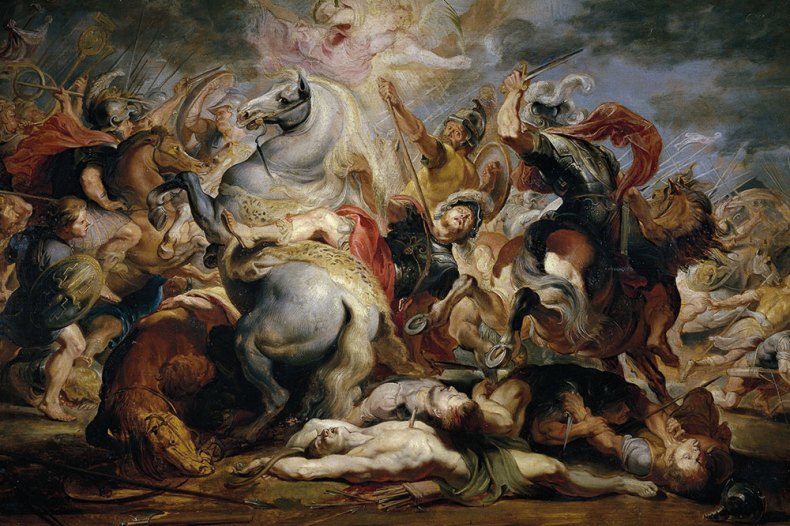
The Death of Decius Mus (1616–17), Peter Paul Rubens. Princely Collections, Liechtenstein, Vaduz-Vienna. Photo: Artefact/Alamy Stock Photo
A version of this tapestry series, which might be identified as one of the first sets to be woven by Antwerp master weavers Jan Raes the Elder, on Cattaneo’s commission (there are some 24 in all), can now be found in the Princely Collections of Liechtenstein, and another comparable series hangs in the Prado. Both of these sets are woven with gold thread in an attempt to elevate the materials of the tapestry to the luminosity of the major art of painting.
The versions that hang in Kilkenny castle are not made of such lustrous fibres, but there is still a wonderful fineness to the composition and rendering of the design. While the arrangement of figures in the battle scene was seen as the height of painterly sophistication, there is something in the careful arrangement of the few people in Decius Mus Dismisses the Lictors that feels particularly modern. Decius Mus is almost at the centre of the scene, picked out in the bright red cloak that he wears throughout the series, but the drama is held in the space between the figures, as he is separated off from the security of Roman society by the devotion to duty that will lead to his death. It is also worth pointing out the delicacy of the horse’s head. The conservation that these tapestries underwent revealed that the tapestries are, unusually, made with linen rather than wool warps and wefts of silk and wool. This likely allows for a finer tapestry. The discovery of the linen warp contributed to the reattribution of the Kilkenny tapestries from a Brussels workshop to a Dutch one. Guy Delmarcel, professor emeritus of the History of Art at Leuven University has said, ‘In art historical value this is an exceptional set [of tapestries] because it is unique, if one accepts my opinion that they were woven in Holland, and not in Antwerp […] So the set should be considered as a very important element of [Ireland’s] cultural heritage. The weaving itself is very fine, with a large amount of silks […] and the border design is very rare too.’
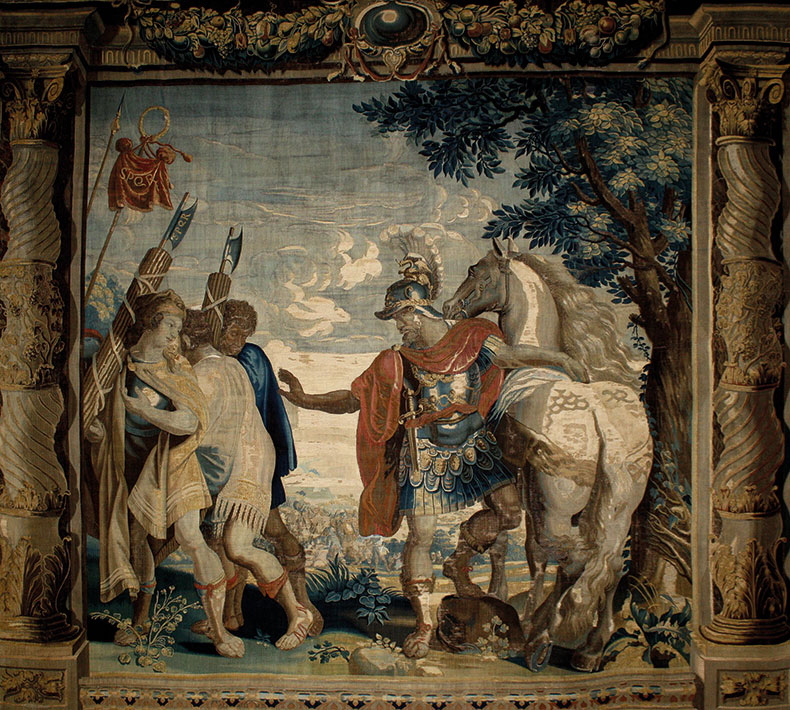
Decius Mus Dismisses the Lictors, from a suite of tapestries probably woven in the Netherlands to designs painted by Rubens in 1616–18. Kilkenny Castle Photo: Kilkenny Castle/Office of Public Works
Hanging in their necessarily crepuscular room in Kilkenny Castle, these tapestries represent a remarkable meeting of European and British history. They show a strand of taste that developed with the duke that, as Heffernan says, ‘develops on the continent and follows what the monarch is doing’. They hang in the Tapestry Room as an example of 17th-century material that is, according to Heffernan, ‘light on the ground’ in Ireland. Yet, having been folded up and moved around, as the duke and his family travelled about the place, these tapestries have survived to tell a tale that not only speaks to the ambitions of an artist for a medium that was beginning to fall out of favour, but also represents the political ambitions of a man who, having experienced exile to find success, understood how self-sacrifice could sometimes be translated into a kind of victory.
From the January 2023 issue of Apollo. Preview and subscribe here.
Unlimited access from just $16 every 3 months
Subscribe to get unlimited and exclusive access to the top art stories, interviews and exhibition reviews.

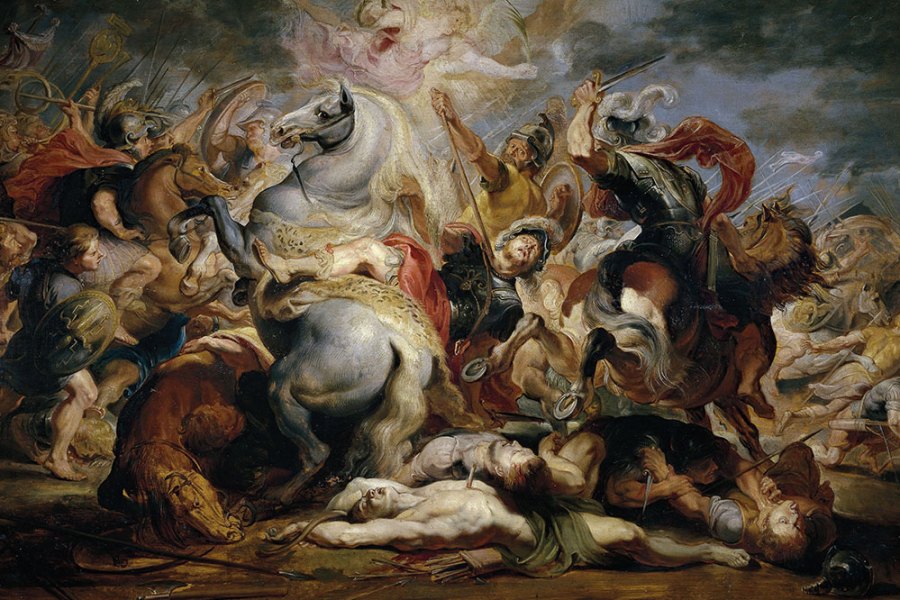
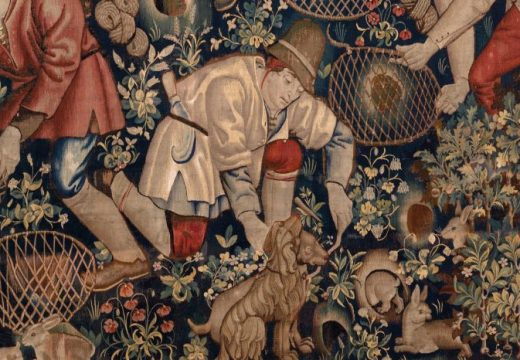
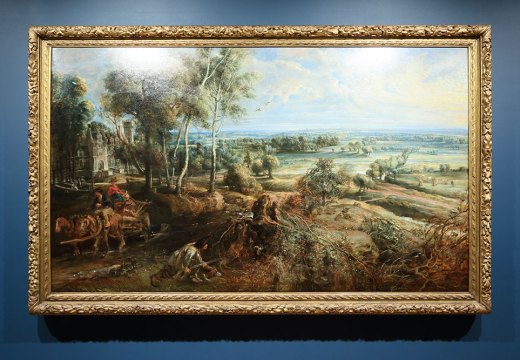
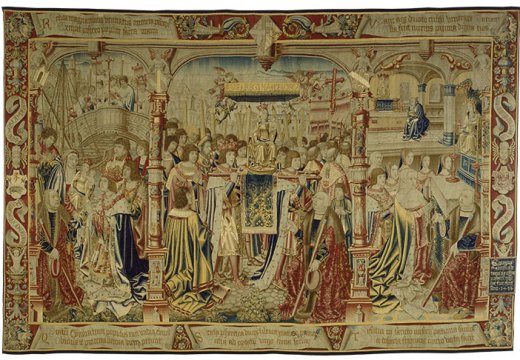









![Masterpiece [Re]discovery 2022. Photo: Ben Fisher Photography, courtesy of Masterpiece London](http://www.apollo-magazine.com/wp-content/uploads/2022/07/MPL2022_4263.jpg)
It’s time for the government of London to return to its rightful home